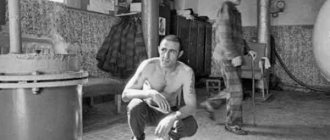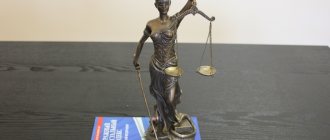Even after a supervisory appeal, there remains a chance to use an application for review based on newly discovered circumstances of the court decision. What are the grounds for review? Download the sample and see an example of drawing up an application to cancel a decision due to newly discovered or new circumstances.
As with any other applications and petitions to the court, a well-drafted document and the provision of evidence directly affects the outcome of its consideration. Will the court grant or deny such an application?
At its core, an application for reconsideration based on newly discovered circumstances is a demand to resolve the dispute differently. This is a review, but not by way of appeal (appeal, cassation, by way of supervision). Therefore, the review procedure has a regulated basis and procedure.
What is a newly discovered circumstance in an application for review?
Newly discovered circumstances are circumstances that existed at the time the final act was issued in the case. This:
- such significant circumstances that are not known and could not be known to the applicant;
- deliberately false testimony of a witness, expert opinion, falsification of evidence, incorrect translation established by a court verdict, when these documents formed the basis of the court decision;
- crimes of judges, participants in the case (including parties), their representatives, established by a court verdict, committed during the consideration and resolution of this case.
Please note that the last 2 grounds apply if the court verdict has entered into legal force. And the verdict itself is the main evidence.
What are new circumstances in an application for review based on newly discovered circumstances?
By new circumstances the law understands:
- change or determination (establishment) of the practice of applying the legal norm that formed the basis of the court decision. Such a change must be reflected in the resolution of the Presidium of the Supreme Court of the Russian Federation or in the resolution of the Plenum of the Supreme Court of the Russian Federation. Moreover, there must be a direct indication that this rule has retroactive effect and applies to cases with similar circumstances.
- reversal of the act of the court or authority that became the basis for the relevant court decision (for example, reversal of the verdict in cases of compensation for damage from a crime)
- recognition of a transaction as invalid if it resulted in an illegal decision
- recognition of the law applied in a case as inconsistent with the Constitution when the applicant in this case went to court
- issuance by the European Court of Human Rights in this case of an act of violation of the Convention for the Protection of Human Rights
The law has provided a separate basis for review in cases of ownership of unauthorized construction. This is the establishment or change of the grounds to recognize a particular structure as an unauthorized construction if a decision on demolition has been made in the case.
Each base has its own practice of application. Therefore, if you have difficulties deciding whether it is worth filing an application for review due to newly discovered circumstances, we recommend using the help of a duty lawyer.
Time limits and procedure for submitting an application for review to the court
An application for review based on newly discovered circumstances can be filed against a court decision, ruling or court order. To do this, an application is submitted within a certain time frame (3 months from the moment the grounding circumstance became known). The beginning of the period is established by Art. 395 of the Civil Code of the Russian Federation. Are the deadlines over? Submit an application to restore the procedural time limit at the same time. But in any case, this period cannot exceed 6 months from the emergence of grounds for revision.
The document is submitted to the court, which issued the act subject to review. If a higher court canceled the previous act and issued a new one, and it is this one that needs to be reviewed, then the applicant appeals to the higher court.
The applicant is a participant in the case. Not only the plaintiff and defendant, but also third parties and others. The legal successor can also submit an application for review due to newly discovered circumstances. The prosecutor submits a presentation (if he filed a claim or participated in the case to give an opinion).
APPLICATION
for review of a judicial act based on new and newly discovered circumstances
Brief plot of the case, judicial acts adopted in case No. A40-“...”/13
Limited Liability Company "PA" filed claims with the Moscow Arbitration Court (vol. 1, pp. 2-7; vol. 3, pp. 2-6) for violation of exclusive rights to industrial designs and utility models, protected by patents No. "..." (vol. 3 pp. 8-10) and No. "..." (vol. 1 pp. 12-15), as well as utility model patent No. "..." (vol. 1 pp. 16-18). By decision of the Moscow Arbitration Court, 2 (two) cases were combined into one proceeding (case No. A40-“...”/13).
By the decision of the Moscow Arbitration Court dated 08.08.2014 (vol. 5 pp. 81-88, hereinafter also referred to as the decision, attached to this application), the claims of PA LLC (hereinafter also referred to as the plaintiff, PA LLC) ) to TA LLC (hereinafter also referred to as the defendant, applicant, TA LLC) are partially satisfied, namely:
1) the use of industrial designs by the limited liability company "PA" - "UE" patent No. "...", "PO" patent "..." by the limited liability company "TA" in the manufacture of products "UN", "PFS" is recognized;
2) the use of the utility model of the limited liability company "PA" - "UN" patent No. "..." by the limited liability company "TA" in the manufacture of the product "UND" is recognized;
3) the actions of the limited liability company "TA" for the manufacture, storage, offer for sale, advertising, sale on the territory of the Russian Federation and other introduction into economic circulation on the territory of the Russian Federation of products in which industrial designs and utility models of the Company with limited liability company "PA", namely: industrial design "UE" patent No. "...", industrial design "PO" patent "...", utility model "UND" patent No. "...";
4) the limited liability company "TA" is prohibited from manufacturing, offering for sale, advertising, selling on the territory of the Russian Federation, storing for these purposes, importing into the territory of the Russian Federation and any other introduction into economic circulation on the territory of the Russian Federation of products in which industrial designs and utility models of the Limited Liability Company "PA" were used, namely: industrial design "UE" patent No. "...", industrial design "PO" patent "...", utility model "UND" patent No. "...".
5) in accordance with the court decision, the applicant, at his own expense, is obliged to withdraw from sale throughout the Russian Federation products that use industrial designs and utility models of the Limited Liability Company "PA", namely: industrial design "UE" patent No. "... ", industrial design "PO" patent "...", utility model "UND" patent No. "...", and also at your own expense publish the court decision in case No. A40-"..."/13 in the official bulletin of the federal executive body for intellectual property property. The rest of the claim was rejected.
By Resolution of the Ninth Arbitration Court of Appeal No. 09AP-“…”/2014 dated October 28, 2014, the decision was canceled and the claims were rejected in full.
By a resolution of the Intellectual Rights Court dated March 26, 2015, the resolution of the Ninth Arbitration Court of Appeal No. 09AP-“...”/2014 dated October 28, 2014 was canceled and the case was sent for a new trial to the Ninth Arbitration Court of Appeal.
By Resolution of the Ninth Arbitration Court of Appeal No. 09AP-“...”/2015 dated June 10, 2015, the decision of the first instance court was upheld, the appeal was not satisfied.
By the decision of the Intellectual Rights Court dated September 24, 2015, the decision of the court of first instance and the decision of the appellate court were left unchanged, and the defendant’s cassation appeal was not satisfied.
By ruling of the Supreme Court of the Russian Federation No. 305-ES15-“…” dated January 11, 2016, the limited liability company “TA” was denied the transfer of a cassation appeal for consideration at a court hearing of the Judicial Collegium for Economic Disputes of the Supreme Court of the Russian Federation.
Grounds for raising the issue of reviewing the decision of the Moscow Arbitration Court dated 08/08/2014 in case No. A40-“…”/13 due to new circumstances
(in relation to industrial designs previously protected by the plaintiff’s patents Nos. "...", "...", which were recognized by Rospatent as completely invalid)
According to the applicant, the following circumstances are grounds for raising the issue of reviewing the decision of the Moscow Arbitration Court dated 08.08.2014. in case No. A40-“...”/13 due to new circumstances.
By decision of the Federal Service for Intellectual Property (Rospatent) dated June 15, 2016 No. 2012503945/63, patent of the Russian Federation No. "..." for the industrial design "PO", issued under application No. 2012503945/49 with priority dated November 14, 2012 in the name of PA LLC , is declared invalid completely.
By decision of the Federal Service for Intellectual Property (Rospatent) dated 06/15/16 No. 2009502251/63, patent of the Russian Federation No. "..." for the industrial design "UE", issued under application No. 2009502251/63/49 with priority dated 08.24.2009 in the name of LLC " PA” was declared invalid completely.
In accordance with paragraph 1 of part 3 of Article 311 of the Arbitration Procedural Code of the Russian Federation, a new circumstance is the cancellation of a judicial act of an arbitration court or a court of general jurisdiction or a resolution of another body that served as the basis for the adoption of a judicial act in this case.
According to the explanations given by the Supreme Arbitration Court of the Russian Federation in paragraph 7 of the Resolution of the Plenum No. 52 of June 30, 2011 “On the application of the provisions of the Arbitration Procedural Code of the Russian Federation when revising judicial acts based on new or newly discovered circumstances,” a judicial act can be revised based on new circumstances in connection with the cancellation of a judicial act of an arbitration court or a court of general jurisdiction or a resolution of another body (clause 1 of part 3 of Article 311 of the Arbitration Procedure Code of the Russian Federation) only if the canceled acts actually served as the basis for the adoption of a judicial act of the arbitration court in this case.
In accordance with paragraph 8 of part 1 of Article 1225, Article 1226 of the Civil Code of the Russian Federation, utility models refer to the results of intellectual activity that are granted legal protection (intellectual property) and for which intellectual rights are recognized.
Within the meaning of Article 1346, paragraph 3 of Article 1354 of the Civil Code of the Russian Federation, protection is provided on the territory of the Russian Federation only to those exclusive rights to industrial designs that are certified by patents issued by the federal executive body for intellectual property or valid on the territory of the Russian Federation in accordance with international treaties of the Russian Federation, in the volumes specified in the patent.
From the above rules, as well as part 1 of Article 65 of the Arbitration Procedural Code of the Russian Federation (hereinafter also referred to as the Arbitration Procedure Code of the Russian Federation), it follows that in order to satisfy the requirement for the protection of exclusive rights to an industrial design, the plaintiff must first of all prove that he has such exclusive rights certified by a patent .
From the case materials it follows that the basis for the decision of the Moscow Arbitration Court dated 08.08.2014 in this case was the patent No. "..." for the industrial design "Software" presented by the plaintiff in confirmation of his rights, patent No. "..." for the industrial sample "UE".
However, by decision of the Federal Service for Intellectual Property dated June 15, 2016 No. 2012503945/63, patent No. “…” for the industrial design “Software” was declared completely invalid. By decision of the Federal Service for Intellectual Property dated June 15, 2016 No. 2009502251/63, patent No. “...” for the industrial design “UE” was also declared completely invalid.
In support of these circumstances, the applicant submitted:
1. A copy of the decision of the Federal Service for Intellectual Property dated June 15, 2016 and the conclusion of the panel of the Chamber for Patent Disputes based on the results of consideration of the objection, which is an annex to the said decision, according to which patent No. “...” was declared invalid completely.
2. A copy of the decision of the Federal Service for Intellectual Property dated June 15, 2016 and the conclusion of the board of the chamber for patent disputes based on the results of consideration of the objection, which is an annex to the said decision, according to which patent No. “...” was declared invalid completely
By virtue of paragraphs 1, 3 of Article 1398 of the Civil Code of the Russian Federation, a patent for an invention, utility model or industrial design may be declared invalid in whole or in part during its validity period on the basis of a decision of the federal executive body for intellectual property, adopted in accordance with paragraphs 2 and 3 Article 1248 of this Code.
In accordance with paragraphs 4, 5 of Article 1398 of the Civil Code of the Russian Federation, a patent for an invention, utility model or industrial design, declared invalid in whole or in part, is canceled from the date of filing the patent application; invalidating a patent means canceling the decision of the federal executive body for intellectual property to issue a patent for an invention, utility model or industrial design (Article 1387) and canceling the entry in the relevant state register (Clause 1 of Article 1393).
Thus, declaring a patent invalid means, in essence, declaring it absent from the moment of issue.
As the Plenum of the Supreme Court of the Russian Federation and the Plenum of the Supreme Arbitration Court of the Russian Federation explained in paragraph 54 of Resolution No. 5/29 of March 26, 2009 “On some issues that arose in connection with the entry into force of part four of the Civil Code of the Russian Federation” cannot be recognized violation of the right of a person for whom a patent, trademark was registered, actions of other persons to use an invention, utility model or industrial design, the patent for which was subsequently declared invalid, to use a trademark, the provision of legal protection to which was subsequently declared invalid.
No other evidence confirming that the plaintiff has exclusive rights to industrial designs “Software” and “UE”, except for invalidated patents No. “...” and No. “...”, was presented in the case materials.
According to Article 317 of the Arbitration Procedure Code of the Russian Federation, based on the results of consideration of an application for review of a decision, resolution, ruling that has entered into legal force due to new or newly discovered circumstances, the arbitration court either makes a decision or resolution to satisfy the application and cancel the previously adopted judicial act due to new or newly discovered circumstances, or makes a determination to refuse the application. In case of cancellation of a judicial act due to new or newly discovered circumstances, the case is re-considered by the same arbitration court, which canceled the previously adopted judicial act, in the general procedure established by this Code. The arbitration court has the right to reconsider the case immediately after the cancellation of the judicial act in the same court session, if the persons participating in the case or their representatives are present at the court session and have not raised objections to the consideration of the case on the merits in the same court session.
According to the applicant, the above circumstances are the basis for raising the issue of reviewing the decision of the Moscow Arbitration Court dated 08/08/2014. in case No. A40-“...”/13 due to new circumstances.
Grounds for raising the issue of reviewing the decision of the Moscow Arbitration Court dated 08.08.2014 in case No. A40-“...”/13 based on newly discovered and new circumstances
(in relation to the utility model protected by the plaintiff’s patent No. “...")
According to the applicant, there are grounds for raising the issue of reviewing the decision of the Moscow Arbitration Court dated August 8, 2014 in case No. A40-“...”/13 due to newly discovered circumstances.
As follows from the case materials, the basis for the court’s decision was the conclusions set out in the Expert’s Opinion (vol. 2 pp. 128-143).
The forensic examination was carried out by patent attorney P.N.V., whose forensic expert report established the use of the utility model patent No. “...” in the applicant’s product. Based on this conclusion, P.N.V. the court found a violation of the plaintiff’s exclusive rights to a utility model (patent No. “...").
“...” the panel of the Chamber for Patent Disputes refused to satisfy the defendant’s objections to the issuance of a patent for utility model No. “...”. When considering the defendant's objections to the issuance of patent No. "...", the interests of the plaintiff in the present case were represented by the same patent attorney P.N.V. (an expert who previously conducted a forensic examination in this case).
When considering the defendant’s objections to the issuance of patent No. “...” P.N.V. On behalf of the plaintiff the following were presented:
— Response to the objection to the issuance of patent No. “…” (attached). — New edition of the utility model formula for patent No. “…” (attached). — Power of attorney to represent the interests of the plaintiff in the Chamber of Patent Disputes, issued by the plaintiff P.N.V. (attached).
As follows from the attached review, submitted to the Chamber of Patent Disputes by the same patent attorney P.N.V., who previously conducted the forensic examination, the defendant’s product does not use the plaintiff’s utility model.
In fact, P.N.V., who previously acted as a forensic expert and established the defendant’s use of a utility model in the defendant’s product, representing the plaintiff in the chamber for patent disputes, makes the exact opposite conclusion that the defendant’s product does not use the plaintiff’s utility model.
Moreover, a new edition of the utility model formula is attached to the review, which implies the issuance of a new patent with a clarified formula. In essence, a new utility model formula (“edited”) means making additions (corrections, clarifications, additions, etc.) to the utility model formula, each feature of which and 1 (one) equivalent feature, according to the conclusion of forensic expert P.N. .B, was contained in the applicant's product.
In addition, by comparing the conclusions and explanations of P.N.V., which were given to her at the court hearing, and the contents of the review and the new formula for the utility model, which were presented by P.N.V. to the Chamber of Patent Disputes, we can come to the conclusion that the explanations of the same person, who acted alternately as a forensic expert and a representative in an administrative body, are contradictory and mutually exclusive. This circumstance is also confirmed by the audio recording of the court hearing from “...” (available in the case materials), which recorded the explanations of P.N.V., which contradict the conclusions later stated by her in the response filed with the Chamber of Patent Disputes.
In particular, from the independent claim of the utility model for patent No. "..." (the patent is available in the case file), the following was removed: "... at least one horizontally oriented stiffener located on each back side of the corner, jumpers located between vertically oriented stiffening ribs and the back sides of the corner, with the possibility of fixing the attached cladding panels,” “... an installation platform, horizontally oriented, located along the perimeter of the upper part on the back side of the corner, with spikes.”
In addition to the above deletions, the following has been added to the new utility model formula:
“... he” (adding the pronoun “he” - the subject means a radical change in the attribute, since the system of control and coordination of elements changes); "...spikes located at the top on each back of the corner...".
For visual convenience, below is a table that briefly compares the features that, according to the expert’s conclusion, were contained in the defendant’s product with the changes (additions, clarifications, changes, etc.) that are set out in the new “edited” utility model formula) .
| №№ (indicated in the expert’s report) | Expert opinion (vol. 2, pp. 128 - 143) (signs of an independent claim contained in the defendant’s product, according to the Expert’s Opinion) | New edition of the formula for the utility model of patent No. "..." (attached to the response to objections to the grant of patent No. "..." ) |
| clause 5 | it contains at least one vertically oriented stiffener, | The pronoun “he” is added, which is the subject, thereby changing the meaning of the attribute, and a different, new system for managing and coordinating structural elements appears. |
| clause 7 | contains at least one horizontally oriented stiffener rib, | The highlighted (previously used attribute) is excluded from the new formula |
| clause 8 | located on each back side of the corner, | The highlighted (previously used attribute) is excluded from the new formula |
| clause 9 | contains jumpers, | The highlighted (previously used attribute) is excluded from the new formula |
| clause 10 | located between vertically oriented stiffeners and the back sides of the corner, with the possibility of fixing attached cladding panels, | The highlighted (previously used attribute) is excluded from the new formula |
| «…» | «…» | «…» |
| paragraph 13 | contains a mounting platform, horizontally oriented, | The highlighted (previously used attribute) is excluded from the new formula |
| paragraph 14 | placed along the perimeter of the upper part on the back side of the corner, with spikes with the possibility of fixing another corner installed on top, | The highlighted (previously used attribute) is excluded from the new formula |
| paragraph 14 | placed along the perimeter of the upper part on the back side of the corner, with spikes, spikes located in the upper part on each back side of the corner, with the possibility of fixing another corner installed on top, | Highlighted added, crossed out means exclusion of these characteristics from the formula. The previously used noun in the nominative case (thorns) is changed to a noun in the instrumental case (with thorns). The difference is that the previously used nominative case was not controlled by the verb, but after changing the case of the noun to the instrumental case, the noun is controlled by the verb. Consequently, the system of control and coordination of elements, as well as the meaning of the attribute, changes. |
| «…» | «…» | «…» |
| Page 8 approx. 3 | Using the identity of products when comparing products of the plaintiff and the defendant: “... external corners are not used independently, but only with panels and the same corners, and if such an assembly is carried out, then the walls of the building, lined with PA and TA products, will be like “twin brothers” and will definitely mislead the user of the product in relation to the manufacturer » | In the response submitted to the Chamber of Patent Disputes, the plaintiff’s position changes; it turns out that the identity of the products can no longer be used when considering objections to the grant of patent No. “...”. According to the representative of the plaintiff P.N.V., even when considering objections to the grant of a patent, the applicant’s reference to the identity of the products is untenable. |
| «…» | «…» | «…» |
The previously stated features, including those removed and added to the new formula, as well as their presence in the applicant’s product, led to the conclusions of the forensic expert P.N.V., which served as the basis for recognizing the plaintiff’s patent No. “…” as used in the defendant’s products. .
It is obvious that, regardless of the existence of the right to make changes (clarifications, additions, deletions) to the formula of the utility model, the above circumstances could not but affect the conclusions set out in the expert’s conclusion on the basis of which the decision was made.
Possible references to the existence of the right to make changes (additions, clarifications, etc.) cannot be considered valid, since such significant and fundamental changes to both the independent clause of the utility model formula and the legal position of the plaintiff, forensic expert P.N.V. and his representative P.N.V. in the Chamber for Patent Disputes are circumstances confirming the existence of grounds for reviewing a court decision based entirely on the expert’s opinion.
According to the defendant, the above-mentioned circumstances can be attributed to circumstances essential to the case that were not and could not be known to the applicant.
The applicant could not have known that the same patent attorney, acting simultaneously as a forensic expert and a representative of the plaintiff in the patent dispute chamber, would present contradictory arguments and conclusions depending on the procedure (judicial or administrative) these arguments are being considered.
“...” after identifying the contradictory arguments of the forensic expert and at the same time the plaintiff’s representative in the chamber for patent disputes, the applicant filed a petition with the Moscow Arbitration Court for the return of material evidence (the defendant’s products), which were the objects of research by P.N.V.
“...” the petition for the return of material evidence was accepted by the court for consideration (a copy of the document confirming the court’s acceptance of the petition for the return of material evidence from the case is attached). However, as of the current date, the applicant cannot obtain this material evidence.
According to the applicant, the material evidence available in the case materials and other products of the applicant are identical, which contradicts the arguments of P.N.V.
According to the applicant, the above-mentioned circumstances are significant for the case, which were not and could not be known to the applicant.
According to Art. 309 of the Arbitration Procedure Code of the Russian Federation, an arbitration court may review a judicial act adopted by it and which has entered into legal force on new or newly discovered circumstances on the grounds and in the manner provided for in Chapter 37 of the Arbitration Procedure Code of the Russian Federation.
By virtue of Art. 311 of the Arbitration Procedure Code of the Russian Federation, the grounds for revising judicial acts according to the rules of Chapter 37 of the Arbitration Procedure Code of the Russian Federation are:
1) newly discovered circumstances - those specified in Part 2 of this article and the circumstances in the case that existed at the time of the adoption of the judicial act;
2) new circumstances - specified in part 3 of this article, which arose after the adoption of a judicial act, but which are essential for the correct resolution of the case.
According to Part 2 of Art. 311 of the Arbitration Procedure Code of the Russian Federation, newly discovered circumstances are circumstances essential to the case that were not and could not be known to the applicant.
In accordance with Art. 317 of the Arbitration Procedure Code of the Russian Federation, based on the results of consideration of an application for review of a decision, resolution, ruling that has entered into legal force due to new or newly discovered circumstances, the arbitration court either makes a decision, a resolution to satisfy the application and cancel a previously adopted judicial act due to new or newly discovered circumstances, or issues determination of refusal to satisfy the application.
Based on the above and the materials of the case, as the applicant believes, there are grounds for reviewing the decision of the Moscow Arbitration Court dated August 8, 2014 based on new and newly discovered circumstances.
Based on the above and in accordance with Art. Art. 309 - 317 Arbitration Procedural Code of the Russian Federation
ASK:
1. Review (cancel), based on new circumstances, the decision of the Moscow Arbitration Court dated 08.08.2014 in case No. A40-“…”/13.
2. Review (cancel), based on newly discovered circumstances, the decision of the Moscow Arbitration Court dated 08/08/2014 in case No. A40-“…”/13.
APPENDICES: 1. "..." 2. "..."
The representative of the applicant is LLC “TA” Pavlov S.V.
Consideration of an application for review based on newly discovered circumstances
The documents are reviewed by the court at the hearing. The parties and participants in the case are notified of the date and time of consideration of the application. But their failure to appear does not affect the opportunity to make a decision on the application.
Based on the results of consideration of the application, the court may make a ruling. In which to satisfy the application and consider the case according to the rules of the Code of Civil Procedure, or to refuse. In the latter case, the participants in the case have the right to file a private complaint.
You can learn more about the procedure for considering an application for review based on newly discovered circumstances by referring to the resolution of the Plenum of the Armed Forces of the Russian Federation dated December 11, 2012. No. 31, as well as the resolution of the Constitutional Court of the Russian Federation dated January 11, 2019 No. 2-P.
When can a case be reviewed?
The conditions for reviewing a court decision in a civil case based on newly discovered circumstances are set out in Article 392 of the Code of Civil Procedure of the Russian Federation. This mechanism is designed to ensure the implementation of justice in full and the correction of errors unwittingly made during the first examination.
The grounds for revision may be:
- Circumstances that were newly discovered after the issuance of a judicial act (that is, those that existed at the time of consideration of the case, but for objective reasons did not previously become known to the court and the participants in the process);
- New circumstances that arose after the court decision was made.
A review is possible if not any of the circumstances listed above arise, but only one of those mentioned in the law.







